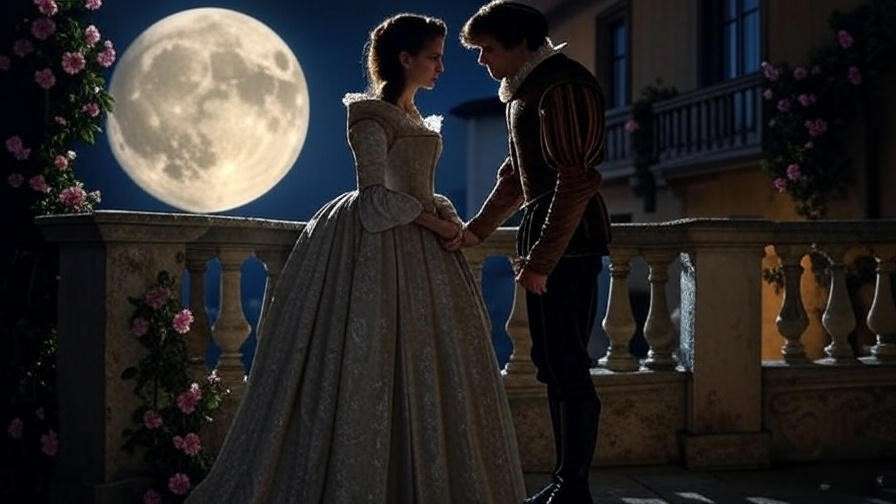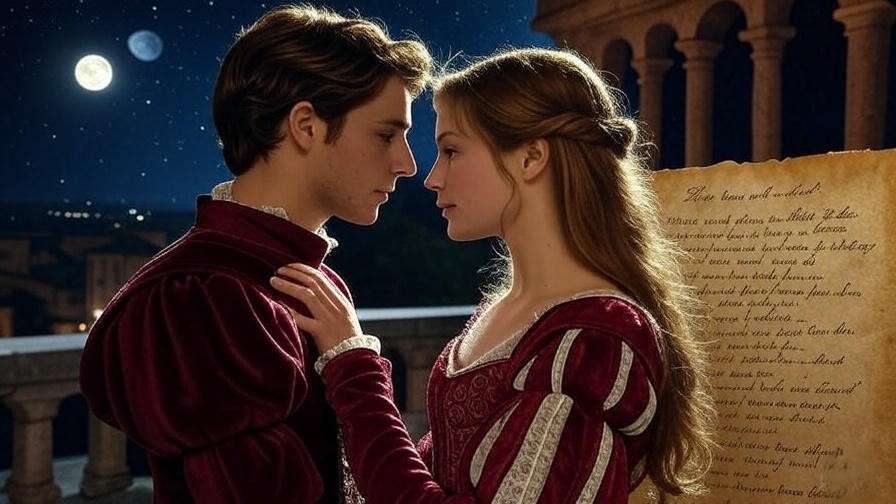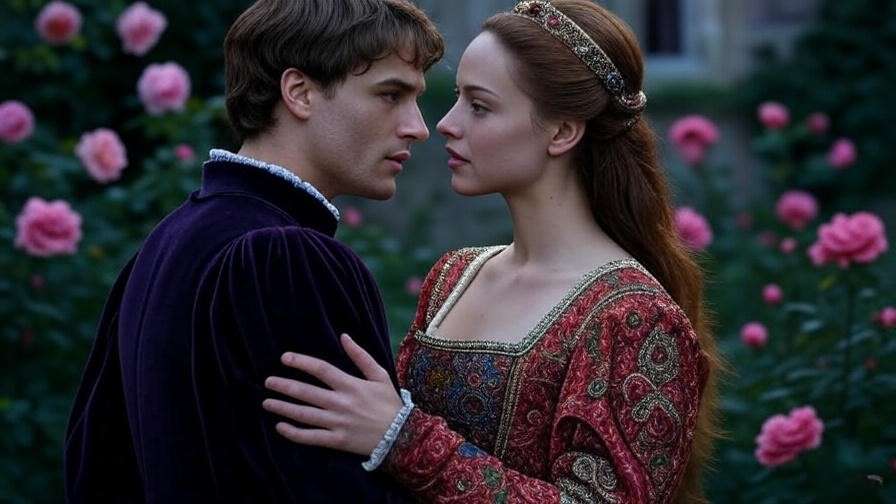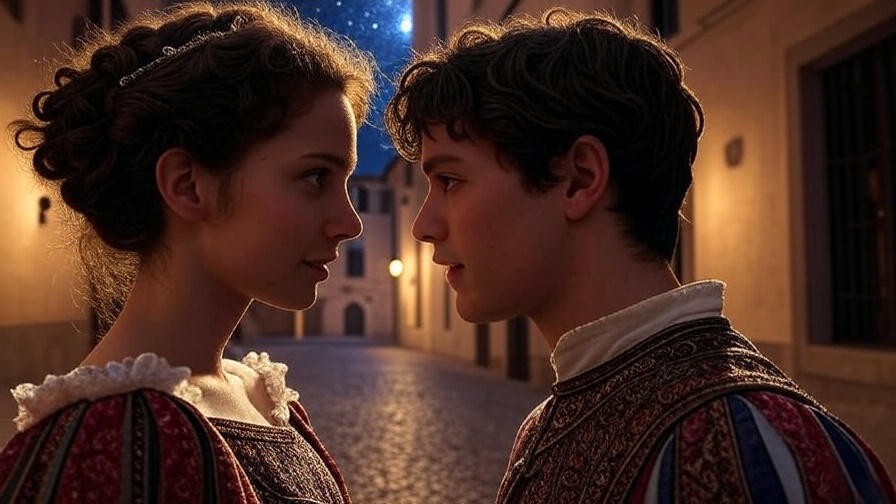Picture two young lovers, hearts racing under a moonlit sky, whispering vows of eternal devotion despite a world that seeks to tear them apart. This is the magic of Act 2 in Shakespeare’s Romeo and Juliet, where passion ignites and fate begins to tighten its grip. Whether you’re a student tackling an exam, an educator crafting a lesson, or a Shakespeare enthusiast diving deeper into this timeless tragedy, this Romeo and Juliet Act 2 study guide unlocks the act’s pivotal scenes, themes, and characters with clarity and depth. With expert analysis, practical study tips, and historical context, this guide is your key to mastering Act 2 and appreciating its enduring brilliance.
Act 2 is the emotional heart of Romeo and Juliet, where the lovers’ bond deepens through secret vows and a clandestine marriage, setting the stage for both romance and tragedy. This comprehensive guide breaks down every scene, explores key themes like love and fate, and provides actionable tools to excel in essays, exams, or discussions. Drawing on years of studying and teaching Shakespeare, I’ll guide you through the act’s poetic language, dramatic tension, and cultural significance, ensuring you gain a deeper understanding of this iconic play.
Overview of Romeo and Juliet Act 2
Context and Importance of Act 2
To fully grasp Act 2, it’s essential to understand its place in Romeo and Juliet. Act 1 introduces the feud between the Montagues and Capulets, culminating in Romeo and Juliet’s electric meeting at the Capulet ball. Act 2 picks up immediately after, plunging us into the lovers’ secret world as they defy their families’ hatred. This act is pivotal because it transforms their fleeting attraction into a committed, though doomed, union. It also introduces Friar Laurence and the Nurse as key allies, while foreshadowing the tragic consequences of their choices.
Act 2 is where Shakespeare balances soaring romance with ominous tension. The lovers’ impulsive decisions—culminating in their secret marriage—set the stage for the escalating conflicts of Act 3. Themes of love, secrecy, and fate dominate, making this act a critical turning point that drives the narrative toward its heartbreaking climax.
Scene Breakdown
Act 2 consists of six scenes, each advancing the plot and deepening the emotional stakes:
- Scene 1: Romeo ditches his friends to seek Juliet, climbing into the Capulet orchard.
- Scene 2: The iconic balcony scene, where Romeo and Juliet confess their love and plan to marry.
- Scene 3: Romeo convinces Friar Laurence to perform the marriage, despite the Friar’s reservations.
- Scene 4: Mercutio teases Romeo, and the Nurse delivers Juliet’s message, confirming the wedding plans.
- Scene 5: Juliet anxiously awaits news from the Nurse, who delays before revealing the marriage arrangements.
- Scene 6: Friar Laurence marries Romeo and Juliet, but warns of the dangers ahead.
This act covers a single day, intensifying the play’s sense of urgency and inevitability.
Key Themes in Act 2
Love and Passion
Act 2 is defined by the reckless, all-consuming love between Romeo and Juliet. The balcony scene (Scene 2) is a masterclass in romantic intensity, with lines like Juliet’s “My bounty is as boundless as the sea, / My love as deep” (2.2.133–134) capturing their unrestrained passion. Their love defies the social and familial barriers of Verona, as Juliet famously questions, “What’s in a name? That which we call a rose / By any other name would smell as sweet” (2.2.43–44). This rejection of their families’ identities underscores their willingness to risk everything for love.
Yet, their passion is not without complexity. Romeo’s swift shift from pining for Rosaline to loving Juliet raises questions about his impulsiveness, while Juliet’s pragmatic concerns about their families’ feud show her balancing emotion with reason. This tension makes their love both exhilarating and precarious.
Fate and Foreshadowing
Fate looms large in Act 2, with Shakespeare weaving subtle hints of the tragedy to come. In Scene 6, Friar Laurence warns, “These violent delights have violent ends” (2.6.9), foreshadowing the destructive consequences of the lovers’ haste. Similarly, Romeo’s earlier reflection in Scene 3 about “some consequence yet hanging in the stars” (2.3.57) suggests an inescapable destiny. These moments remind the audience that the lovers’ joy is fleeting, heightening the act’s emotional stakes.
Secrecy and Risk
Secrecy defines Act 2, as Romeo and Juliet navigate their forbidden love behind their families’ backs. From Romeo’s clandestine visit to the Capulet orchard to their secret marriage, every action carries immense risk. Friar Laurence’s decision to marry them, hoping to end the feud, adds another layer of secrecy, as does the Nurse’s role as a go-between. This web of hidden plans amplifies the drama, as each choice pulls the lovers closer to disaster.
Character Analysis in Act 2
Romeo
Romeo in Act 2 is a study in romantic fervor. His impulsive decision to sneak into the Capulet orchard reflects his willingness to risk everything for Juliet. His poetic language in the balcony scene—“But soft, what light through yonder window breaks? / It is the east, and Juliet is the sun” (2.2.2–3)—reveals a young man consumed by love. Yet, his quick transition from mourning Rosaline to adoring Juliet suggests a tendency toward infatuation, a trait Friar Laurence gently critiques in Scene 3. Romeo’s blend of passion and recklessness makes him both captivating and flawed.
Juliet
Juliet emerges as a remarkably mature and self-aware character in Act 2. In the balcony scene, she grapples with the practical challenges of their love, asking, “How camest thou hither, tell me, and wherefore? / The orchard walls are high and hard to climb” (2.2.62–63). Her famous rejection of names—“What’s in a name?”—shows her philosophical depth, while her insistence on marriage reveals her desire for commitment over fleeting romance. Juliet’s blend of vulnerability and determination makes her a compelling counterpart to Romeo.
Friar Laurence
Friar Laurence is a pivotal figure in Act 2, acting as both a confidant and a moral compass. His decision to marry Romeo and Juliet stems from a hope to reconcile the feuding families, as he notes, “For this alliance may so happy prove / To turn your households’ rancor to pure love” (2.3.91–92). However, his willingness to enable their secret plan raises ethical questions. Is he a wise mediator or a reckless enabler? His cautionary words in Scene 6 suggest he’s aware of the risks, making his role complex and multifaceted.
The Nurse
The Nurse provides comic relief and emotional warmth in Act 2. Her teasing banter in Scene 5, delaying news of the marriage to an impatient Juliet, showcases her playful personality. Yet, her loyalty to Juliet is unwavering, as she braves Mercutio’s mockery to deliver messages. The Nurse’s earthy pragmatism contrasts with the lovers’ idealism, grounding the act’s soaring romance in a more human perspective.
Literary Devices and Language
Imagery and Symbolism
Shakespeare’s use of imagery in Act 2 is breathtaking, particularly the interplay of light and dark. In the balcony scene, Romeo compares Juliet to the sun, stars, and angels, creating a celestial aura around her. The orchard itself symbolizes a private Eden, a space of intimacy amid a hostile world, while the balcony represents both connection and separation. These images deepen the emotional resonance of the lovers’ plight.
Metaphors and Similes
Act 2 is rich with poetic language. Romeo’s metaphor of Juliet as the sun transforms her into a life-giving force, while Juliet’s simile, “My bounty is as boundless as the sea,” conveys the limitless nature of her love. These devices elevate the dialogue, making it both lyrical and emotionally charged, while reinforcing the play’s themes of passion and transcendence.
Dramatic Irony
Dramatic irony permeates Act 2, as the audience knows the lovers’ marriage will lead to tragedy. When Friar Laurence agrees to marry them, hoping for peace, we sense the futility of his optimism. Similarly, Juliet’s joy in Scene 5 contrasts with our awareness of the looming disaster, heightening the act’s tension and emotional impact.
Scene-by-Scene Analysis
Scene 1: The Aftermath of the Party
Act 2 opens with Romeo evading his friends—Mercutio and Benvolio—who tease him about his infatuation with Rosaline. Unaware of his new love for Juliet, they provide comic relief before Romeo slips away to the Capulet orchard. This brief scene transitions the play from the public chaos of the ball to the private intensity of the lovers’ world, setting the stage for the balcony scene.
Scene 2: The Balcony Scene
The balcony scene is the heart of Act 2 and one of the most famous moments in literature. Romeo, hiding in the orchard, overhears Juliet’s soliloquy, where she declares her love and rejects the feud’s constraints: “Deny thy father and refuse thy name” (2.2.34). Their exchange is a delicate dance of passion and pragmatism, as Juliet worries about the risks while Romeo pledges his devotion. Key quotes like “O Romeo, Romeo, wherefore art thou Romeo?” (2.2.33) and “Parting is such sweet sorrow” (2.2.185) capture the scene’s emotional depth. This scene establishes their commitment to marry, cementing their bond and sealing their fate.
Scene 3: Friar Laurence’s Cell
In Scene 3, Romeo seeks Friar Laurence’s help to marry Juliet. The Friar, initially skeptical of Romeo’s sudden shift from Rosaline, agrees in hopes of ending the feud. His warning—“Wisely and slow, they stumble that run fast” (2.3.94)—reflects his caution, yet his decision to proceed introduces moral ambiguity. This scene highlights the Friar’s pivotal role and sets up the secret marriage.
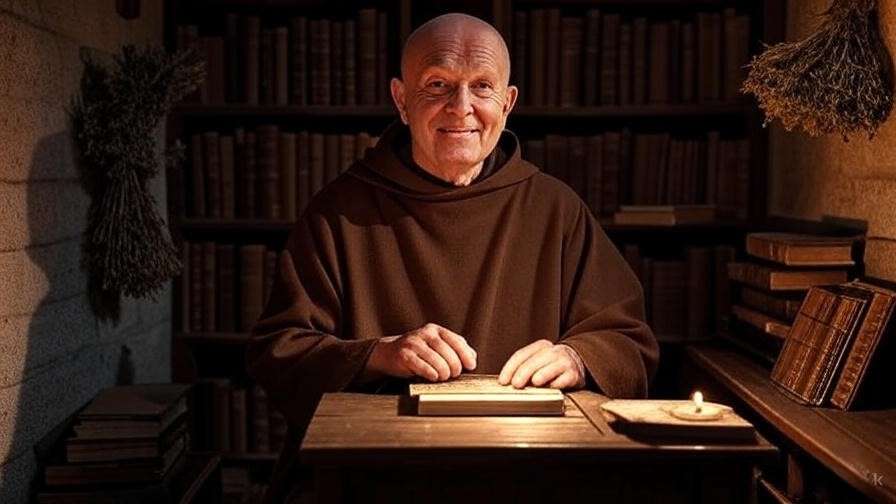
Scene 4: Mercutio and the Nurse
Scene 4 blends humor and tension as Mercutio mocks Romeo’s lovesickness, unaware of his new romance. The Nurse arrives to confirm Juliet’s agreement to the marriage, enduring Mercutio’s bawdy teasing. This scene showcases the Nurse’s loyalty and provides a lighter counterpoint to the act’s intensity, while advancing the plot toward the wedding.
Scene 5: Juliet’s Impatience
Juliet’s anxiety dominates Scene 5, as she awaits the Nurse’s news. The Nurse’s delay, filled with complaints and tangents, frustrates Juliet but adds comic relief. When the marriage plan is revealed, Juliet’s joy is palpable, but the audience senses the ticking clock of tragedy. This scene highlights Juliet’s emotional vulnerability and the Nurse’s role as a confidante.
Scene 6: The Secret Marriage
The act closes with Romeo and Juliet’s marriage in Friar Laurence’s cell. The ceremony is brief but charged with significance, as the Friar warns, “These violent delights have violent ends” (2.6.9). The lovers’ joy is tempered by this ominous note, and the audience feels the weight of their irreversible choice. This scene marks the act’s climax, locking the lovers into a path of no return.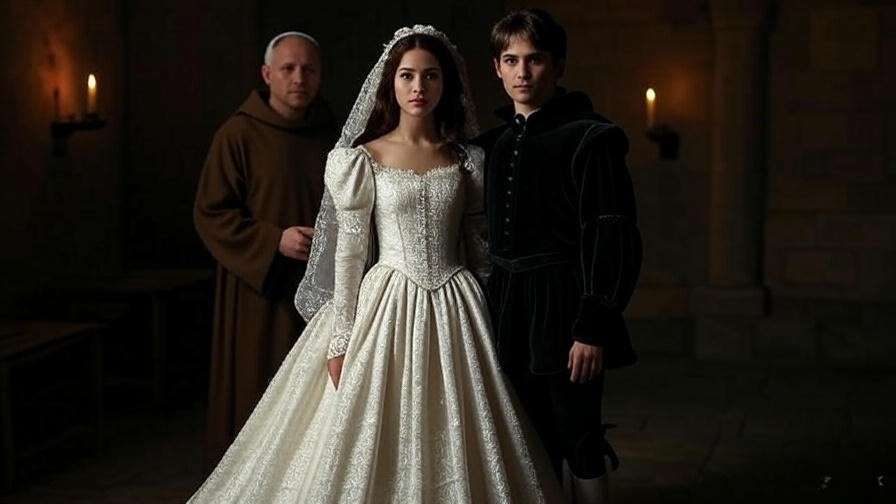
Study Tips and Practical Applications
How to Analyze Act 2 for Essays and Exams
Mastering Act 2 for academic purposes requires a strategic approach to analysis. Start by identifying the act’s core themes—love, fate, and secrecy—and connect them to specific scenes and quotes. For example, when writing an essay on the balcony scene, focus on how Juliet’s question, “What’s in a name?” (2.2.43), challenges societal norms. Structure your essay with a clear thesis, such as “Act 2 illustrates the tension between individual desire and societal constraints.” Support your argument with textual evidence, like Romeo’s light imagery or Friar Laurence’s warnings, and analyze their significance. For exams, practice summarizing each scene in 2–3 sentences to ensure you understand the plot’s progression.
To stand out, compare Act 2’s themes to modern contexts, such as forbidden love in divided societies, to show deeper insight. Always tie your analysis back to Shakespeare’s broader intent, such as his commentary on impulsive youth or inevitable tragedy.
Memorizing Key Quotes
Memorizing quotes from Act 2 is essential for exams and discussions. Here are seven key quotes with their significance:
- “But soft, what light through yonder window breaks? / It is the east, and Juliet is the sun” (2.2.2–3)
- Significance: Romeo’s metaphor elevates Juliet to a celestial figure, emphasizing his romantic idealization.
- Tip: Associate this quote with a mental image of a sunrise to recall its vivid imagery.
- “O Romeo, Romeo, wherefore art thou Romeo?” (2.2.33)
- Significance: Juliet’s lament questions the feud’s arbitrary divisions, highlighting the conflict between love and identity.
- Tip: Link “wherefore” to “why” to remember its meaning.
- “What’s in a name? That which we call a rose / By any other name would smell as sweet” (2.2.43–44)
- Significance: This philosophical reflection underscores Juliet’s desire to transcend social barriers.
- Tip: Visualize a rose to anchor the metaphor.
- “My bounty is as boundless as the sea, / My love as deep” (2.2.133–134)
- Significance: Juliet’s simile conveys the limitless nature of her love, intensifying the scene’s emotion.
- Tip: Picture an ocean to recall the quote’s depth.
- “Wisely and slow, they stumble that run fast” (2.3.94)
- Significance: Friar Laurence’s caution foreshadows the dangers of the lovers’ haste.
- Tip: Imagine a runner tripping to cement the warning.
- “These violent delights have violent ends” (2.6.9)
- Significance: This ominous warning encapsulates the play’s tragic trajectory.
- Tip: Pair this with a mental image of a storm to evoke its intensity.
- “Parting is such sweet sorrow” (2.2.185)
- Significance: Juliet’s oxymoron captures the bittersweet nature of their love.
- Tip: Think of a farewell scene to recall the emotion.
To memorize these, use flashcards or recite them in context (e.g., while visualizing the balcony scene). Group quotes by theme or character to create mental connections.
Classroom Activities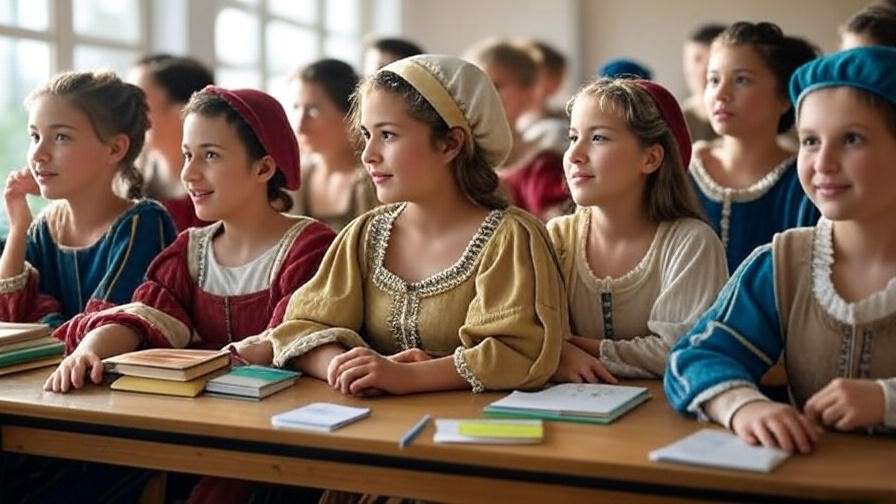
Engage with Act 2 through interactive activities to deepen understanding:
- Reenact the Balcony Scene: Divide students into pairs to perform Scene 2, focusing on tone and emotion. Discuss how different deliveries (e.g., passionate vs. cautious) change the scene’s impact.
- Debate: Fate vs. Free Will: Split the class into groups to argue whether Romeo and Juliet’s actions in Act 2 are driven by fate or choice, using quotes like Friar Laurence’s warnings as evidence.
- Creative Writing Prompt: Ask students to write a diary entry from Juliet’s perspective after Scene 5, capturing her excitement and anxiety about the marriage.
- Theme Mapping: Create a visual chart linking quotes to themes (e.g., love, secrecy) across Act 2’s scenes to visualize their interconnectedness.
Historical and Cultural Context
Elizabethan Views on Love and Marriage
In Elizabethan England, marriage was often a strategic alliance, dictated by family status and economic considerations. Romeo and Juliet’s secret marriage in Act 2 defies these norms, as they prioritize personal passion over parental approval. Juliet’s willingness to reject her family’s name and marry without consent would have shocked Shakespeare’s audience, highlighting the radical nature of their love. The feud between the Montagues and Capulets mirrors real tensions in Elizabethan society, where family loyalty often trumped individual desires. Understanding this context deepens appreciation for the lovers’ rebellion and the risks they take.
Shakespeare’s Use of Source Material
Shakespeare drew heavily on Arthur Brooke’s 1562 poem, The Tragical History of Romeus and Juliet, but transformed it for dramatic effect. Brooke’s narrative is more moralistic, warning against youthful disobedience, while Shakespeare emphasizes the lovers’ passion and tragedy. In Act 2, Shakespeare condenses Brooke’s timeline, making the lovers’ commitment feel more urgent. He also amplifies the balcony scene’s poetry, turning a simple exchange into a lyrical masterpiece. This adaptation showcases Shakespeare’s genius in elevating source material into a universal story.
Common Questions and Misconceptions
FAQs About Act 2
- What is the significance of the balcony scene?
The balcony scene (Scene 2) is the emotional core of Act 2, where Romeo and Juliet declare their love and commit to marriage. It showcases their passion, defiance of the feud, and philosophical reflections on identity, while setting the stage for their tragic fate. - Why does Friar Laurence agree to marry Romeo and Juliet?
Friar Laurence hopes the marriage will reconcile the feuding families (2.3.91–92). Despite his reservations about Romeo’s impulsiveness, he sees the union as a potential path to peace, though his decision carries moral ambiguity. - What does Juliet mean by “parting is such sweet sorrow”?
In Scene 2, Juliet’s oxymoron reflects the bittersweet joy of her love for Romeo, tempered by the pain of their separation. It captures the intensity of their fleeting moments together. - How does Act 2 foreshadow the tragedy?
Through Friar Laurence’s warnings (e.g., “These violent delights have violent ends”) and Romeo’s references to fate, Act 2 hints at the catastrophic consequences of the lovers’ choices, building dramatic irony. - Why is the Nurse’s role important in Act 2?
The Nurse acts as Juliet’s confidante and messenger, facilitating the secret marriage. Her humor and loyalty provide emotional balance, while her interactions highlight the risks of their plan.
Connections to the Broader Play
How Act 2 Sets Up the Tragedy
Act 2 is the fulcrum of Romeo and Juliet, where the lovers’ choices lock them into a tragic path. The secret marriage in Scene 6 binds them irrevocably, making the violence of Act 3 (e.g., Mercutio’s death, Romeo’s banishment) inevitable. Friar Laurence’s warnings and the act’s emphasis on secrecy foreshadow the miscommunications and conflicts that unravel in later acts. The balcony scene’s optimism, contrasted with these ominous hints, creates a poignant tension that drives the play’s emotional arc.
Comparisons to Other Acts
Act 2’s tone is markedly different from Act 1’s public spectacle and Act 3’s violent escalation. Act 1 establishes the feud and the lovers’ initial spark, while Act 2 deepens their bond in private, intimate settings. Act 3 shifts to chaos, with deaths and banishment shattering the lovers’ hopes. Act 2’s focus on love and secrecy serves as the emotional peak, making the subsequent tragedies feel all the more devastating.
Expert Insights and Analysis
Why Act 2 Resonates Today
The universal themes of Act 2—love against odds, youthful rebellion, and the tension between individual desire and societal pressure—continue to captivate modern audiences. The balcony scene’s poetic beauty has inspired countless adaptations, from Baz Luhrmann’s 1996 film Romeo + Juliet to modern stage productions. Its exploration of forbidden love resonates in contexts like cultural or political divides, making Act 2 a timeless reflection of human passion and conflict.
Scholarly Perspectives
Scholars like Harold Bloom praise Act 2 for its lyrical intensity, arguing that the balcony scene represents Shakespeare’s peak as a poet of love. Others, like Marjorie Garber, highlight Friar Laurence’s moral ambiguity, noting his role as both a facilitator of love and an enabler of tragedy. Debates persist about whether the lovers’ haste reflects youthful folly or a profound rejection of societal constraints, enriching academic discussions of Act 2’s complexity.
Additional Resources
Recommended Reading
- Romeo and Juliet (Folger Shakespeare Library edition): Offers detailed annotations for deeper understanding.
- Shakespeare’s Words by David Crystal: Explores the play’s language and historical context.
- Shakespeare and the Elizabethan World by Susan Doran: Provides insight into the cultural backdrop of the play.
Conclusion
This Romeo and Juliet Act 2 study guide has unpacked the act’s emotional depth, from the soaring romance of the balcony scene to the ominous warnings of Friar Laurence. By exploring themes, characters, literary devices, and historical context, we’ve revealed why Act 2 is the emotional and narrative heart of Shakespeare’s tragedy. Whether you’re preparing for an exam, teaching a class, or simply savoring Shakespeare’s genius, use the study tips, quotes, and insights here to deepen your understanding. Revisit the text, try the suggested activities, or share your favorite Act 2 moment in the comments below to join the conversation!
FAQs
- What makes the balcony scene so iconic?
The balcony scene (Scene 2) is celebrated for its poetic beauty, emotional intensity, and philosophical depth, as Romeo and Juliet declare their love while grappling with their families’ feud. - How does Act 2 advance the plot of Romeo and Juliet?
Act 2 deepens the lovers’ commitment through their secret marriage, introduces key allies like Friar Laurence and the Nurse, and foreshadows the tragedy through warnings and dramatic irony. - Why does Juliet question Romeo’s name in Scene 2?
Juliet’s line, “What’s in a name?” (2.2.43), reflects her desire to transcend the Montague-Capulet feud, emphasizing that love should outweigh societal labels. - What role does fate play in Act 2?
Fate is a recurring theme, with Romeo’s reference to “some consequence yet hanging in the stars” (2.3.57) and Friar Laurence’s warnings hinting at the lovers’ doomed path. - How can I memorize Act 2 quotes effectively?
Use flashcards, associate quotes with vivid mental images (e.g., a sunrise for Romeo’s “Juliet is the sun”), and practice reciting them in context to reinforce meaning. - What is the Nurse’s role in Act 2?
The Nurse serves as Juliet’s confidante and messenger, facilitating the secret marriage while providing comic relief through her playful interactions. - How does Act 2 compare to modern love stories?
Act

